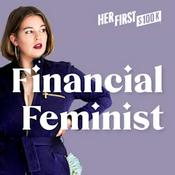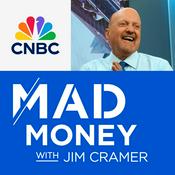116 episodes

114: Merry Christmas and Happy New Year from the Sandbox
25/12/2025 | 8 mins.
Merry Christmas 2025! In this special holiday episode, Tammy J. Bond shares a powerful message on the "gift of who you are." As we sprint toward the end of the year, it's easy to focus on quotas and wrap-ups, but the most impactful gifts you can give your team cost nothing. Tammy breaks down four essential "gifts" every leader should offer this season to restore hope, spark courage, and set a transformational tone for 2026. In This Episode, You'll Discover: The Power of Being Truly Seen: Tammy shares a personal reflection on why seeing the person behind the production is a leader's greatest honor—especially when life feels like a "struggle bus." The Gift of the "Exhale": Learn the one powerful question that helps your team drop their shoulders, release the weight of 2025, and step into the new year with a clean slate. Encouragement as a Strategy: Why caring for your team isn't "soft"—it's a tactical move that builds braver, more accountable, and clearer-communicating employees. Presence Over Perfection: Forget the glossy end-of-year speech. Tammy reveals her 90-Second "Real Talk" Framework to affirm your team and future-cast their success in 2026. A Christmas Note for You, Leader: Your presence is the gift that multiplies. You don't need all the answers; you just need to be consistent, clear, and caring. From the Leadership Sandbox family to you, Merry Christmas!

113: The 2025 Leadership Paradox - Control vs. Empowerment
18/12/2025 | 13 mins.
As we round out 2025, leaders are facing a series of "this-or-that" choices: Control vs. Empowerment, Stability vs. Agility, Automation vs. Humanity. Tammy J. Bond argues that the real superpower for 2026 isn't choosing one—it's holding the space for "Both-And." This episode explores why managers are "drowning" in complexity and how the "Yes, And" framework—Tammy's personal philosophy—can transform paralyzing tensions into opportunities for growth. Learn how to stop "reloading the dishwasher" for your team and start building a culture of trusted productivity. The Leadership Tensions of 2025 The Struggle is Real: The Center for Creative Leadership identifies the top tensions as juggling people vs. results and leading change vs. managing complexity. The Micromanagement Trap: With managers overseeing nearly 3x as many people as they did a few years ago, the default response to stress is often to "tighten the screws." The Cost of Control: Global engagement has slipped to 21%. When you seek more approval and create less autonomy, you create a "why bother?" culture that leads to quiet quitting. Three Non-Negotiable Conversations for 2026 To bridge the gap between control and empowerment, initiate these three dialogues before the new year: The Ownership Ask: "What decisions are you ready to own so I can step out of the way?" (Define the boundaries and metrics together). The Mirror Moment: "Where am I over-controlling you?" Invite honest feedback and define actions to shift that control. The AI Soul Search: "How will we use AI as a 'team member' without losing the soul of our company?" Co-create rules that keep the process human-centric. Your Final Sandbox Challenge Before 2025 ends, identify one thing you currently control that you can release to your team. If you can't find one thing, ask yourself: Is this about risk, or is it my ego? Identifying your "rate-limiting step" is the first move toward becoming a "Both-And" leader. Remember, empowerment doesn't need to be chaos. It's freedom inside a clear framework.

112: December Is Here: Use Year-End Pressure to Fire Up Q1
11/12/2025 | 14 mins.
December isn't just about holidays; it's the most emotionally loaded month for your team—full of stress, burnout, and falling engagement. Tammy J. Bond challenges leaders who treat this month as a "survive and hope January is better" exercise. That approach already sets up Q1 for failure. This episode reveals the high cost of manager burnout and provides the necessary shift in mindset and three essential conversations leaders must have before December 31st to clear the "Workplace Sandbox" and transition into a high-performance 2026. The December Reality Check The Engagement Crisis: The global cost of lost productivity is staggering, and manager engagement is falling, directly impacting your team's energy. The Burnout Driver: Employees are running on fumes due to unspoken expectations and the endless cycle of urgent, last-minute demands. Leaders who ignore this are setting their teams up for failure and turnover. The Core Problem: If you have unspoken expectations in December, you are causing unnecessary fatigue. The thoughtful energy you put into your people now will dictate the success of the new year. Deloitte Launches 2024 Global Human Capital Trends Report – Press Release Your Q1 Fire-Up Strategy To use year-end pressure strategically, you must initiate three focused conversations: The Year-End Truth Conversation: Move past the formal review and initiate simple, straight talk about what worked and the resources needed. The Capacity Conversation: Address "Energy Zappers" and decide what you're willing to let go of to protect long-term human performance. The Next Year's Promise Conversation: Clarify Q1 priorities and identify the specific behaviors that will be rewarded, setting a clear tone for the new year. Final Challenge Leaders, you must be truth tellers. Stop squeezing out one more project and start having the focused conversations that transform your team from running on fumes into a firestorm of Q1 success.

111: AI Is Here - But So Are Human Emotions
04/12/2025 | 14 mins.
AI is here, but so are human emotions. Tammy J. Bond highlights that implementing AI is not just a technical deployment; it's a massive disruption to your team's identity, sense of security, and self-worth. The core challenge for 2026 is leading the emotional side of automation, as your team is both hopeful and terrified. This episode exposes how leaders are currently dropping the ball with silence and lack of guidance, offering a playbook to intentionally build trust and human sustainability around AI usage. The Human Cost of AI Silence Leaders are often failing to implement AI well because they ignore its impact on three fundamental human needs: Certainty: Workers fear for their job security (up to 52% are worried about AI's impact). Competency: The automated work challenges their sense of self-worth and ability to perform their role effectively. Control: People feel a loss of autonomy when a new, vaguely understood tool takes over parts of their process. Ignoring these fears creates camouflaged conflict in the workplace, manifesting as passive resistance, quiet quitting, and overcompensating perfectionism (driven by fear of obsolescence). The Problem of Silence: With 40% of workplaces lacking AI usage guidelines, employees read a leader's silence as, "My leader doesn't know what they're doing," eroding trust and increasing anxiety. The Leader's Playbook: Transforming Culture Your opportunity is to stop letting fear write the rest of your organizational story and actively transform your culture around AI. 3 Essential Steps for AI Implementation: Name the Change: Clarify what AI is and what it is not here to do, not just for the company, but for each position at the granular level. Clarify Expectations: Define what is acceptable and unacceptable to use AI for. Set clear performance measures and expectations for the outcome if misuse occurs. Invest in Skill Building: Provide training not just on the tool, but on the skill of prompt verification and critical assessment of AI output. You must articulate to your team: AI is here to augment you, to enhance you, not to erase you. Reinforce the need for human judgment for the final output. The human is still responsible for the answer, even if the tool provided the initial data. Bold Questions & Actions for This Week Tammy's challenge is to push pause and get the team involved in co-creating the AI strategy: Ask the Fear Question: Sit down with your team and ask: "What about AI really scares you the most right now?" Identify 'Dumb Work': Ask: "Where do you see that AI could remove some of the repetitive work we do so that you can do more of what you're brilliant at?" Co-Design an Experiment: Pick one process this month and work with your team to co-design a small AI experiment to increase familiarity and comfort. The Bottom Line: If your people cannot say out loud what they are afraid of, AI will quietly run your culture from the shadows. Lead the human side of automation.

110: Grateful Leadership
27/11/2025 | 8 mins.
In this quick Thanksgiving episode, Tammy J. Bond challenges the notion that gratitude is just a holiday tradition—it's a leadership strategy. She shares that leaders often get stuck in a "scarcity loop," focusing only on what is not working yet. This episode provides four quick points to help leaders shift their perspective from lack to presence, turning gratitude into a proactive force that expands positive outcomes and boosts team performance. Key Leadership Insights: The Scarcity Loop: Leaders commonly focus on the "yet's" (what they don't have yet, who's not performing yet), leading to a perception of lack. This scarcity loop expands what you don't want to see. Flip Your Focus: Flip the script by focusing on the "yet." Acknowledge the positive basics (e.g., "I'm grateful Frank shows up on time every day") and then shift to what you want next. What you focus on expands. Shift from Missing to Present: Do not focus your attention on what's missing. Shift your thinking to what is present and what you do have. This perspective shift attracts more of the positive into your field of vision. Gratitude as a Strategy, Not a Tradition: Gratitude should be a constant practice. When you focus on the positive around you, you can even find a "best gift attribute" in an underperformer, simply by shifting your attention from what is frustrating to what is present. Thanksgiving Leadership Challenge: Before the holiday distractions take over, pause for 30 seconds and ask yourself this powerful question: "What is here that I have been too busy [distracted] to appreciate?" Take time to breathe in gratitude—not resentment, frustration, or fear. Always remember, leadership isn't something we're born with, it's something that we grow into. Happy Thanksgiving! Remember that gratitude is a leadership strategy. What are you focusing on today, leader?
More Business podcasts
Trending Business podcasts
About Leadership Sandbox: Strategies to Uplevel Workplace Communication, Team Collaboration, and Your Corporate Culture
Listen to Leadership Sandbox: Strategies to Uplevel Workplace Communication, Team Collaboration, and Your Corporate Culture, The Property Academy Podcast and many other podcasts from around the world with the radio.net app

Get the free radio.net app
- Stations and podcasts to bookmark
- Stream via Wi-Fi or Bluetooth
- Supports Carplay & Android Auto
- Many other app features
Get the free radio.net app
- Stations and podcasts to bookmark
- Stream via Wi-Fi or Bluetooth
- Supports Carplay & Android Auto
- Many other app features


Leadership Sandbox: Strategies to Uplevel Workplace Communication, Team Collaboration, and Your Corporate Culture
download the app,
start listening.





































